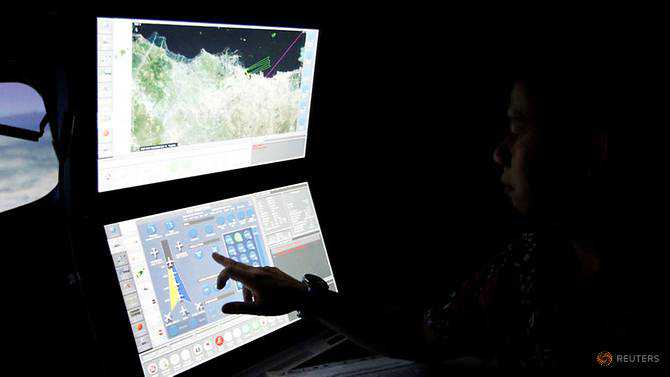Flight manual did not cover situation faced by doomed Lion Air jet: Indonesia investigators
14 November, 2018

Indonesian investigators said on Monday (Nov 12) more training was needed for Boeing 737 MAX pilots after discovering the situation believed to have faced the crew of a doomed Lion Air jet was not contained in the aircraft's flight manual.
US pilots were also not aware of potential risks, two US pilot unions told Reuters.
The comments shed further light on the areas under scrutiny as investigators prepare to publish their preliminary report on Nov 28 or 29, one month after the Lion Air Boeing 737 MAX dived into the Java Sea, killing all 189 on board.
Until now, public attention has focused mainly on potential maintenance problems including a faulty sensor for the "angle of attack", a vital piece of data needed to help the aircraft fly at the right angle to the currents of air and prevent a stall.
Now the investigation's focus appears to be expanding to the clarity of US-approved procedures to help pilots prevent the 737 MAX over-reacting to such a data loss, and methods for training them.
Dennis Tajer, a 737 captain and spokesman for Allied Pilots Association (APA), which represents American Airlines Group Inc pilots, said his union was informed after the crash about a new system Boeing had installed on 737 MAX jets that could command the plane's nose down in certain situations to prevent a stall.
"It is information that we were not privy to in training or in any other manuals or materials," he said.
Soerjanto Tjahjono, head of Indonesia's transportation safety committee of crash investigators (KNKT), said on Monday that Indonesian regulators would tighten training requirements as a result of the findings of the investigation so far.
"We know, because this incident happened, we know we need additional training," he said.
The comments focus attention on the contents of aircraft manuals and a conversion course allowing pilots of the previous generation of Boeing jet, the 737NG, to upgrade to the MAX.
The manual had not covered how to handle a situation like the one that occurred in the crash, Soerjanto told reporters.
Lion Air officials said on Monday that they had followed a training regime approved by both US and European regulators.
The approved training was restricted to three hours of computer-based training and a familiarisation flight, Lion Air Training Centre general manager Dibyo Soesilo said during a media tour of the centre on Monday.
The Oct 29 crash was the first accident involving the 737 MAX, an updated version of Boeing's workhorse narrowbody jet that entered service last year.
CHECKLIST
Information recovered from the jet's flight data recorder last week led the US Federal Aviation Administration (FAA) to issue an emergency airworthiness directive urging airlines to update their flight manuals.
The directive warned pilots that a computer on the Boeing 737 MAX could lead to the plane being forced to descend sharply for up to 10 seconds even in manual flight, leading to potential difficulties in controlling the plane.
Pilots could stop this automated response by pressing two buttons if the system behaved unexpectedly, but questions have been raised about how well prepared they were for such an automatic reaction and how much time they had to respond.
An American Airlines spokesman said the carrier had received the FAA directive as well as a bulletin from Boeing on updating the flight crew operations manual.
Boeing declined to comment directly on its training programme but said it was taking "every measure" to fully understand all aspects of the incident and working closely with the investigating team and all regulatory authorities involved.
Last week it said the fix for this type of event - known as a "runaway stabiliser" - was covered by existing procedures.
Even though this problem was - according to investigators - not covered in the operating manual, pilots did have access to a checklist designed to turn off errant systems when the plane started nosing downwards at the wrong time, said Soejono, a Lion Air instructor who like many Indonesians goes by one name.
Experts say investigators will be examining whether the crew examined this checklist and if so whether they had time to cut off the automated nose-down system while flying at a relatively low altitude of 5,000 feet. Pilots on a previous flight are reported to have overcome a similar sensor problem.
To answer that question fully, investigators may need access to cockpit voice recordings thought to be hidden in the seabed.
A search for the jet's missing cockpit voice recorder is continuing and could provide important information about human factors relating to the crash, Soerjanto said.
The FAA said in a statement that it would take further action if that was warranted by findings from the accident investigation.
TAG(s):
